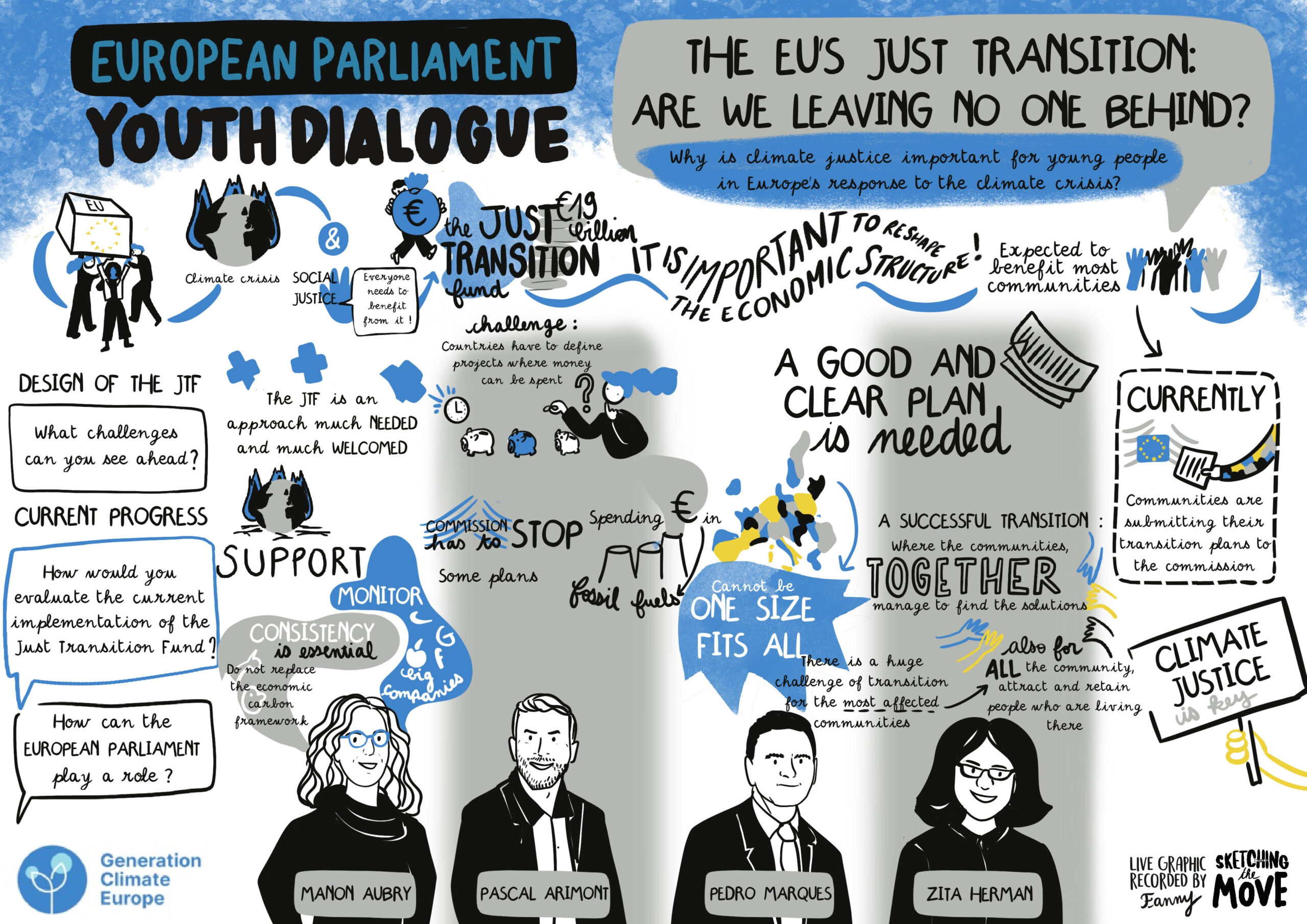The EU's Just Transition: Are we leaving no one behind?
The dialogue focused on 3 main areas:
1. An introduction to climate justice and the Just Transition Fund.
2. A discussion on whether the design of the Just Transition Fund is fit to ensure a just transition for the communities it is supposed to support.
3. A look at the implementation of the Just Transition Fund as of October 2021, with a discussion on what we can expect for the coming years.
Live Sketch from the event

Watch the full event
From our partner political groups, we were joined by three members of the European Parliament: Pascal Arimont (The European People’s Party); Manon Aubry (The Left in the European Parliament – GUE/NGL); and Pedro Marques (The Progressive Alliance of Socialists and Democrats). In addition, Ms Zita Herman, Budget Advisor, joined us on behalf of the The Greens/European Free Alliance. No representative from Renew Europe was able to join us for this Dialogue.
JTF Design
End excess and free allowances effective immediately.
Spend 100% of generated revenues on the EU’s climate transition (including, the just transition and research and innovation funds).
Avoid extending the ETS to sectors already covered by the Effort Sharing Regulation and/or national climate targets.
JTF Implementation
Cover shipping emissions under the EU Monitoring-Report-Verification (MRV) scheme (include all ships calling at European ports, not just intra-EEA).
Bulletproof the ETS against evasive port calls (ships docking at less regulated ports in neighbouring countries to the EU for lower costs) and subsequent carbon leakage.
Link the inclusion of shipping into EU ETS to other policy developments, such as the FuelEU Maritime initiative to efficiently coordinate the sector’s decarbonisation.
EU cohesion policy and climate justice
Include international aviation in the current ETS scheme rather than as a part of the CORSIA scheme.
Remove free allowances to airlines (carriers currently receive half of their emission allowances permits for free).
Make the EU ETS cover all aviation emissions (not only intra-EEA, which is only 5% of global aviation).





